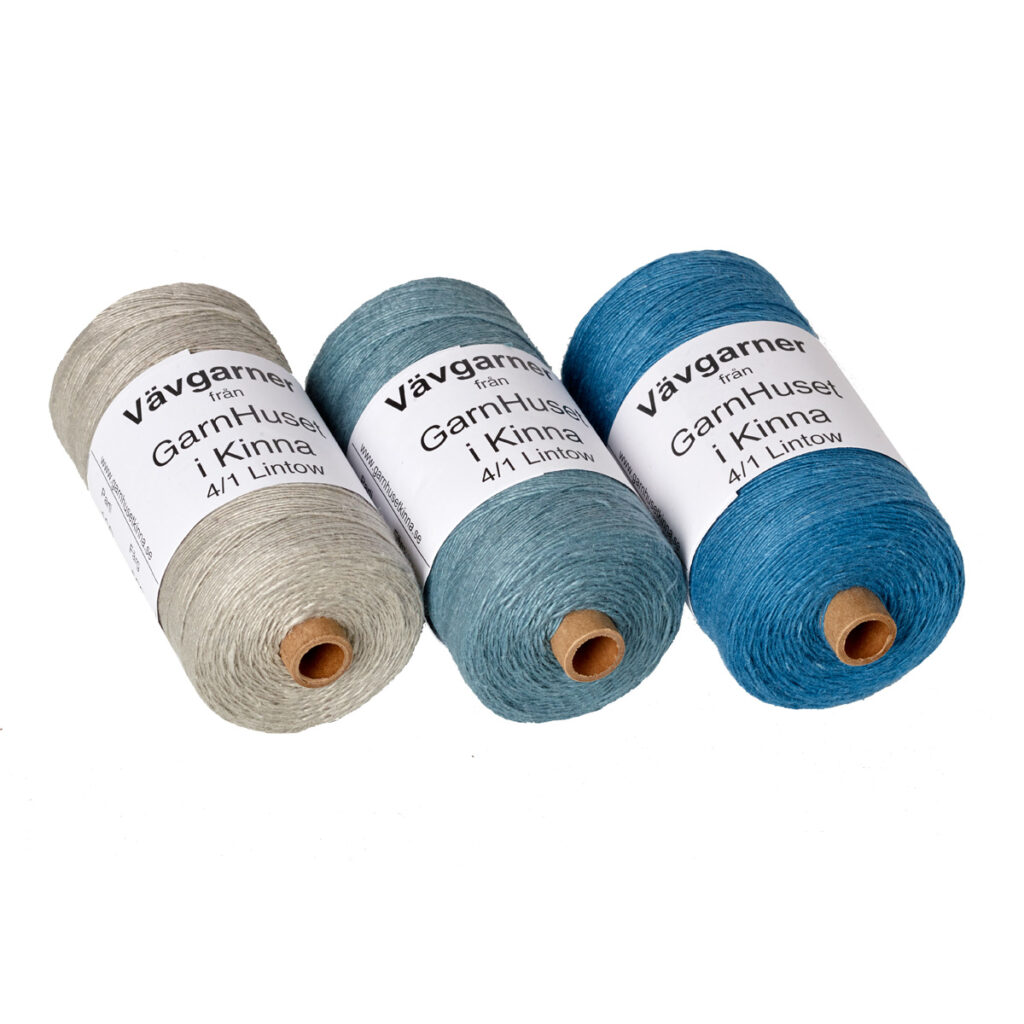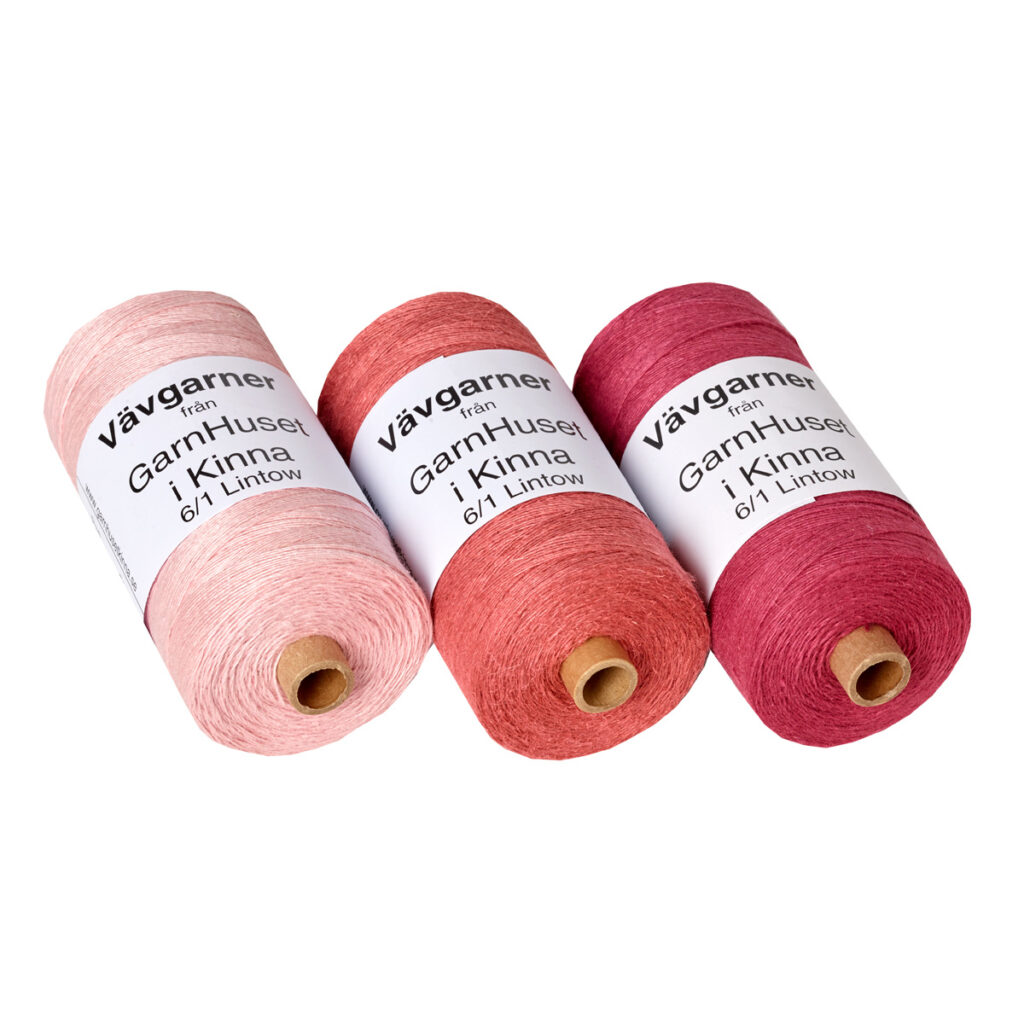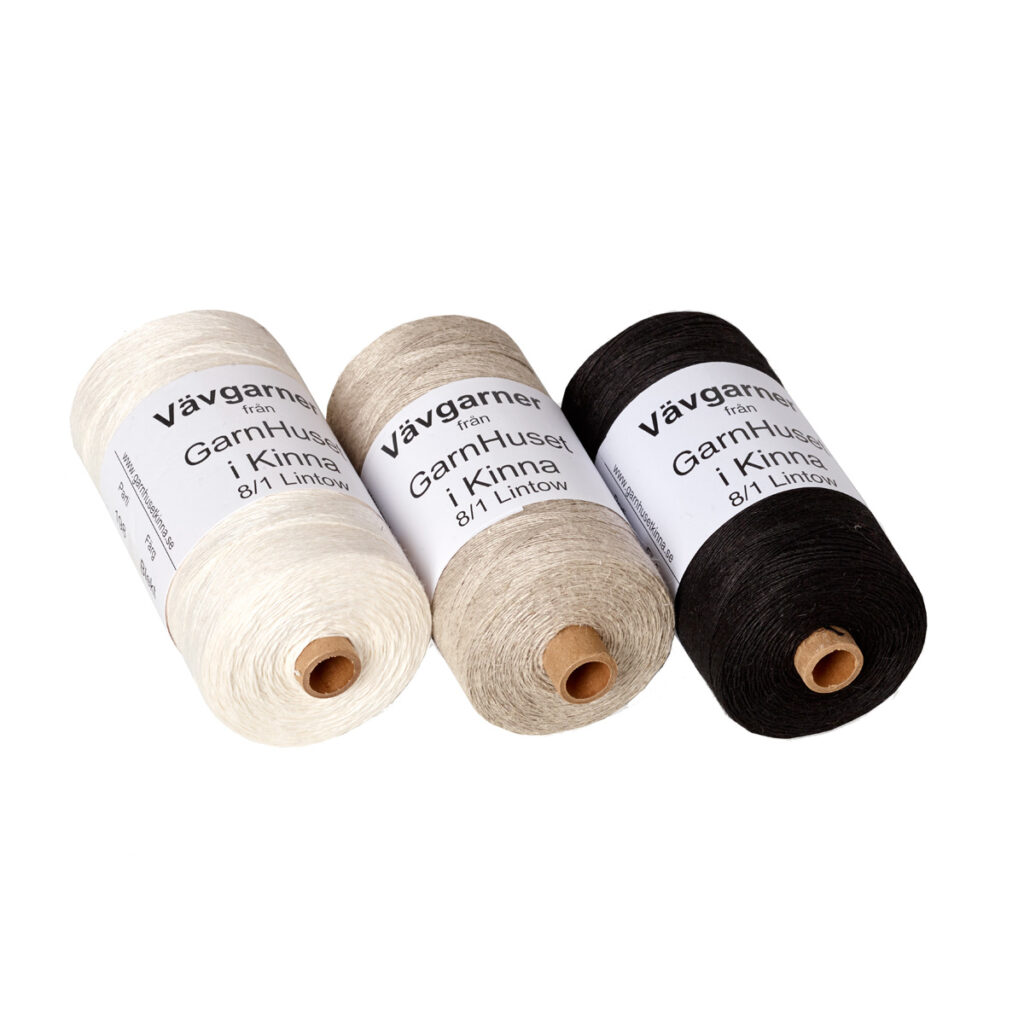Tow Linen is made from the short fibres left after the long flax fibres have been removed to be spun into line linen. The resulting yarn has a more textured appearance and feel and is not consistent in thickness as slubs are made with the shorter fibres as it is spun.
Tow linen can be used for both warp and weft but is much more commonly used as weft on line linen, cottolin or cotton warps. Towels are the obvious choice for weaving with this yarn as the variation in texture and slubs mean that the absorbency is increased. Weaving doesn’t have to be limited to towels though, these yarns will make interesting cloth with their added texture, and although not as shiny as long line linen there is still a subtle shine to see.
When used in the warp the shorter fibres do produce some fluff whilst weaving, but so does line linen! Taking care to keep an eye on this lint so it either doesn’t build up into little ‘doughnuts’ around the threads or stick ends together will pay dividends in reducing the likelihood of broken threads. If something feels tight when winding on – investigate!
Linen doesn’t cope well with abrasion and will fluff and break if subjected to too much of it. It’s always good practice to make sure your warp is never narrower on the beam as it is in the reed. Wind on frequently, the closer you get to the beater the more the warp will splay in the reed and the same threads will be subjected to more abrasion. Singles linen whether line or tow is more delicate than plied, consider using a plied linen, cotton, or cottolin for the selvedge.
Linen has a reputation for being difficult but when woven with care produces beautiful cloth. Using tow linen as a weft can be a good introduction to weaving with it.
We are now stocking a range of Tow Linen colours in three counts.

Garnhuset Tow Linen 4/1
4/1 Tow Linen is a weft yarn.
X-roll 250 grams. About 2,500m/kg.
100% linen.
Read our article about weaving with tow linen.

Garnhuset Tow Linen 6/1
6/1 Tow Linen is a weft yarn.
X-roll 250 grams. About 3,500m/kg.
100% linen.
Read our article about weaving with tow linen.

Garnhuset Tow Linen 8/1
8/1 Tow Linen is a weft yarn.
X-roll 250 grams. About 4,800 m/kg.
100% linen.
Read our article about weaving with tow linen.
